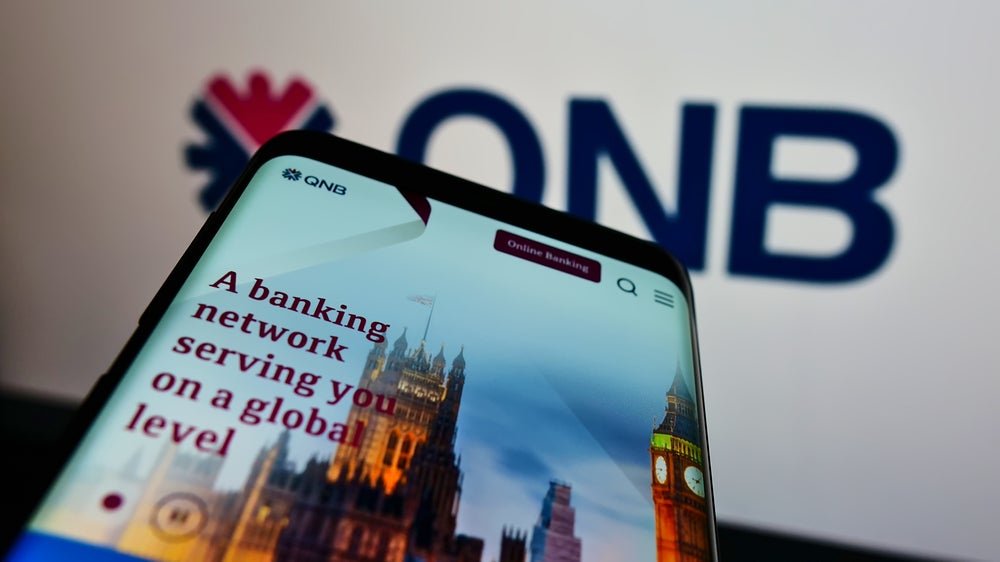their cards businesses to combat the new threat that retailers pose
in the consumer lending market. But BNP Paribas remains unfazed by
the competition, according to its CEO of Personal Finance, Thierry
Gattegno. William Cain reports.
BNP Paribas’ co-branding tie-up with mobile phone operator Orange
is one of a string of deals signed since French laws on co-branding
were relaxed at the end of 2007.
 Since the relaxation of the rules in France, retail
Since the relaxation of the rules in France, retail
banks have been faced with a new competitive threat from retailers,
which had previously been prevented from issuing open-loop cards
through Carte Bancaires, the national interbank network. Now,
famous retail brands like Galeries Lafayette, Intermarché and
Auchan have launched MasterCard-branded products which see them
move partly or directly into competition with retail banks.
The introduction of co-branding has meant the French banking
industry has been faced with tough decisions to make on how they
position themselves within the new payments landscape. François
Gandon, head of products and services at MasterCard France – and
previously a senior member of BNP Paribas’ cards business – says it
meant banks have been forced to consider their strategies very
carefully.
He says: “There is the question of co-branding: am I a partner of
the co-brander, am I competing with them, or trying to keep a kind
of balance? All French financial institutions have their credit
financial institutions behind them. Definitely, the question for
the banks now is, how do I position myself going along the
co-branding route, to which extent am I working the affinity way –
and maybe I can cope with both.”
Affinity plays greater role
Gandon says it was likely retail banks would offer more affinity
cards in their own-branded cards businesses, trying to make
themselves more competitive by using segmentation and marketing.
They could still compete in the co-branding space through their
consumer finance subsidiaries – BNP Paribas’ Cetelem, Société
Générale’s Franfinance, Crédit Agricole’s Sofinco – by teaming up
with retailers who want to offer co-branded products but do not
have their own captive finance arm. Gilbert Arira, BNP Paribas’
head of cards and electronic banking, says his bank welcomed the
competition.
How well do you really know your competitors?
Access the most comprehensive Company Profiles on the market, powered by GlobalData. Save hours of research. Gain competitive edge.

Thank you!
Your download email will arrive shortly
Not ready to buy yet? Download a free sample
We are confident about the unique quality of our Company Profiles. However, we want you to make the most beneficial decision for your business, so we offer a free sample that you can download by submitting the below form
By GlobalData“Of course, we will have to react, but there’s no reason why we
would not accept this competition,” Arira says. “We are in an open
market, and we are not necessarily talking about the same cake, but
a bigger cake.”
He adds: “Looking at other partnerships the group has through
Cetelem, we have a strong engine to do business without the BNP
Paribas brand, for instance, the Steel card [a credit card co-brand
with Orange]. You have to see the big picture, because otherwise if
you just think about pure retail banking activity, you will never
co-brand with anyone because it might kill or cannibalise part of
our business – that is not the vision we have today.”
In an interview with Cards International in its last edition, Arira
outlined a four-point plan for BNP Paribas’ cards business and said
it would form a central part of the bank’s retail banking strategy.
Making up 8 percent of retail banking profit, at around €196
million ($281 million) in the first half of 2008, the BNP Paribas
cards business has 45 million cards, 25 million of which are credit
and 20 million are debit and charge cards. Thierry Gattegno, CEO of
BNP Paribas’ Personal Finance business, echoed Arira’s comments,
saying payment cards offered a unique opportunity to merge a
variety of functions into one instrument.
“We feel we can speak about a kind of convergence which is running
through the cards business,” Gattegno says. “Before, cards were
essentially payments-orientated. Today, it is payment, financing,
loyalty, plus something which is going to arrive – which is linking
cards to new personal technologies like the internet and mobile
phones. This is why we think that the cards business is strategic,
because in one thing you can find these four converging elements –
which is why we are so focused on the cards strategy.”
“Before, cards were just plastic, but they are becoming more than
that, particularly as we see the development of mobile phone
technology. That’s why it’s so important to be focused on the cards
strategy because now there are new opportunities beyond the simple
plastic card.”
BNP Paribas-Orange partnership
BNP Paribas is already positioning itself in the mobile payments
landscape, working with a variety of banks, as well as mobile
operators Bougues Telecom, Orange and SFR in a French m-banking
trial. The scheme is reported to be achieving customer satisfaction
rates of above 90 percent. BNP Paribas’ position in mobile banking
and payments is strengthened by its relationship with Orange, with
which it has launched two co-branded card products this year.
 In May, they launched the Jump
In May, they launched the Jump
co-branded prepaid card which targets the teen market. As well as
its significance in light of the co-branding partnership with
Orange, it was also the bank’s first move into the youth prepaid
market in France, aimed at 12- to 17-year-olds. The product is
marketed as allowing teens to manage their pocket money safely and
simply through parents, who load up the card and can track
expenditure through the product’s website.
In addition to the usual prepaid features, BNP Paribas’ product
also offers twice-monthly special offers. It was marketed through
an online gaming session which allowed teens to compete in
educational competitions with the chance to win prizes.
Volumes and margins in the youth prepaid market are not considered
to be as significant as the opportunities which exist in the
government, gifting, general-purpose and insurance cards. Uptake in
youth prepaid cards is generally expected to lag behind the wider
industry. But BNP Paribas’ strategy of targeting teens through
parents, rather than the teens themselves, is seen as one way of
improving profitability.
In the co-branding space, the bank, through consumer finance
subsidiary Cetelem, launched the Steel card this year, another
Orange co-brand, which is a credit product aimed purely at adults.
Gattegno said one of the big challenges for banks was to educate
the public about prepaid and co-branded products, which are both
relatively new to the French market.
He added there was a compelling strategic interest in combining the
country’s leading merchant acquirer together with Orange, the
country’s biggest mobile phone provider. The partnership presents
obvious opportunities in the future to develop mobile banking and
payments propositions. The two businesses will work together in
France on mobile payments. Outside France, they have a preferred
partner agreement, meaning Orange and BNP Paribas can work with
other partners on mobile payments in countries where the other
partner does not have a strong presence.
CARD TRENDS
French start to cancel cards in a bid to
escape fees as the downturn bites
French card issuers could be hit by a reduction in fee income, as
customers concerned about the economy have started to cancel cards
they use infrequently.
BNP Paribas’ Gilbert Arira, head of cards and electronic banking,
said retention strategies are becoming increasingly important for
credit card businesses in France as customers begin to reduce the
number of cards in their wallets.
According to figures from the Organisation for Economic
Co-operation and Development (OECD), economic activity in France
weakened in the second quarter of 2008 and is projected to remain
weak for the remainder of 2008 and into early 2009. The obvious
impact on consumer spending is having a knock-on effect in credit
card customer behaviour, as accountholders reduce the number of
credit cards they hold to cut down on the monthly fees they pay,
according to Arira.
That meant BNP Paribas was upping its focus on customer retention,
with card activation playing a key role.
Arira said: “This is very a new trend in France. It’s simple – a
card which is not used is a card which will be abandoned. In credit
cards, you need the customer to activate the card and to use
it.
“Retention and activation on the payment card is the same. We are
working to incentivise the customer to use the card. We’ve done
lots of customer relationship management research to find out which
customers don’t use their card or use it only for ATM withdrawal –
people which do not have a broad usage of the card. We are going to
target those customers and make them a proposition to improve the
situation.”
Activation strategies
According to a report by Cards International publisher VRL
KnowledgeBank – Credit Card Retention Strategies – there are a
variety of ways to promote activation of payment card products.
They include product upgrades, rate offers, rewards and loyalty
programmes and offers with targeted partners.
One of the most important elements of any activation stimulation
activity is to target specific, relevant segments. In addition to
increasing activation and spend levels, the programmes can also
decrease attrition rates.
Arira added: “There is a big concern in France about the reduction
in buying power, and so this has cut into expenses. We have to work
on giving the right card to the right customer and be sure that
they activate it and use it, so it’s coming close to one-to-one
marketing now.”
Arira said retention strategies were less important in emerging
markets, where the bank was focused more on customer
acquisition.







